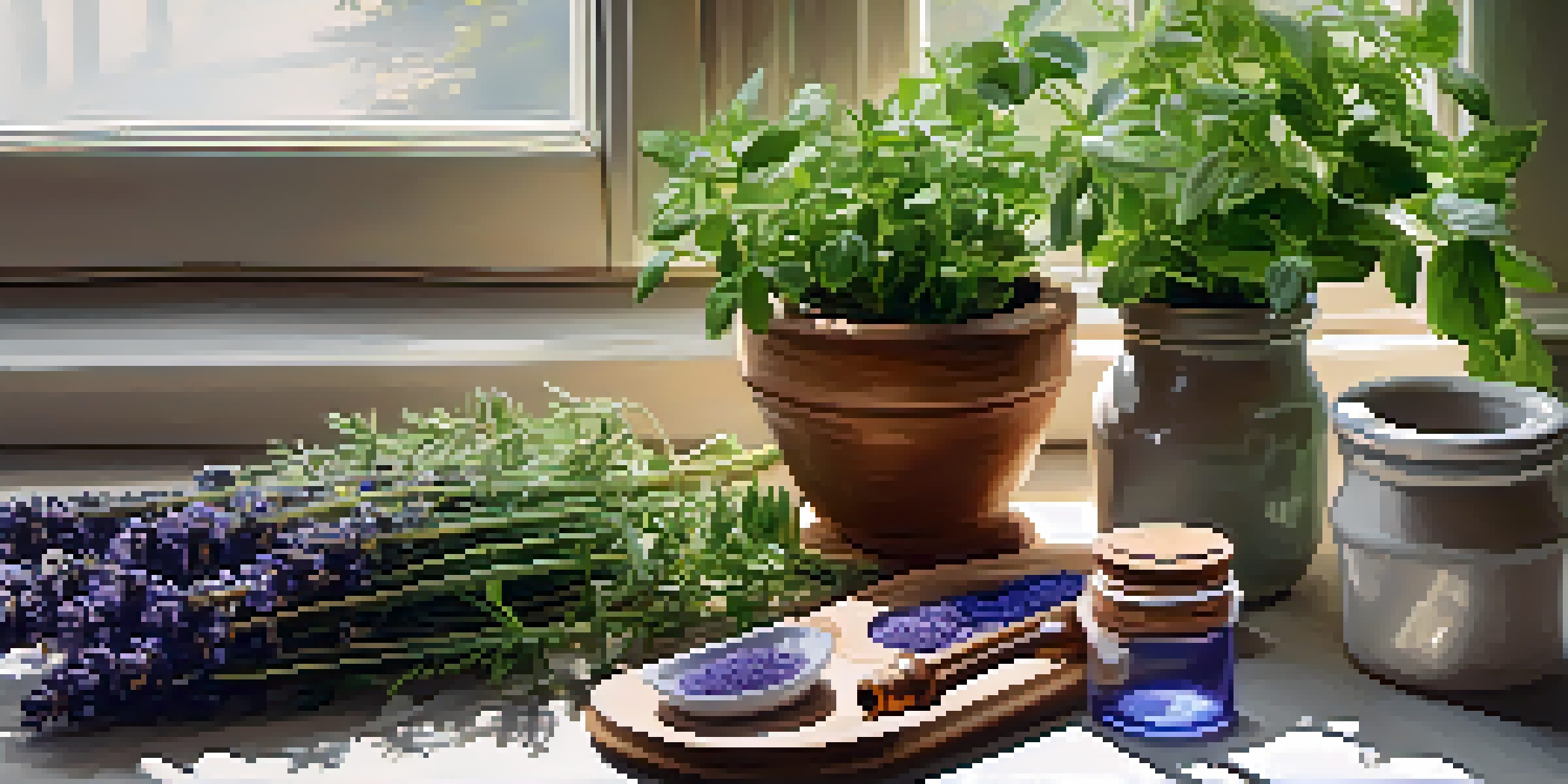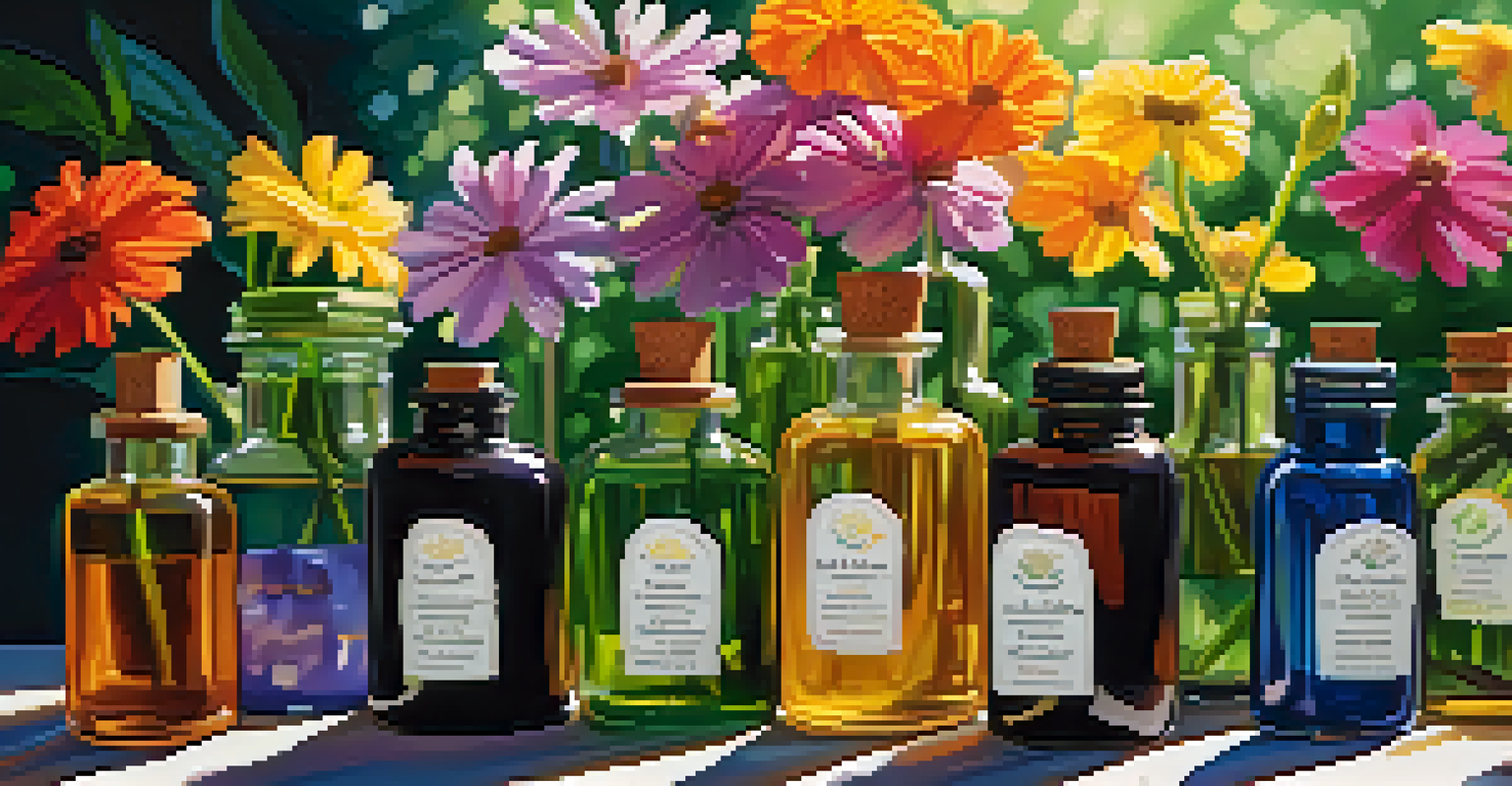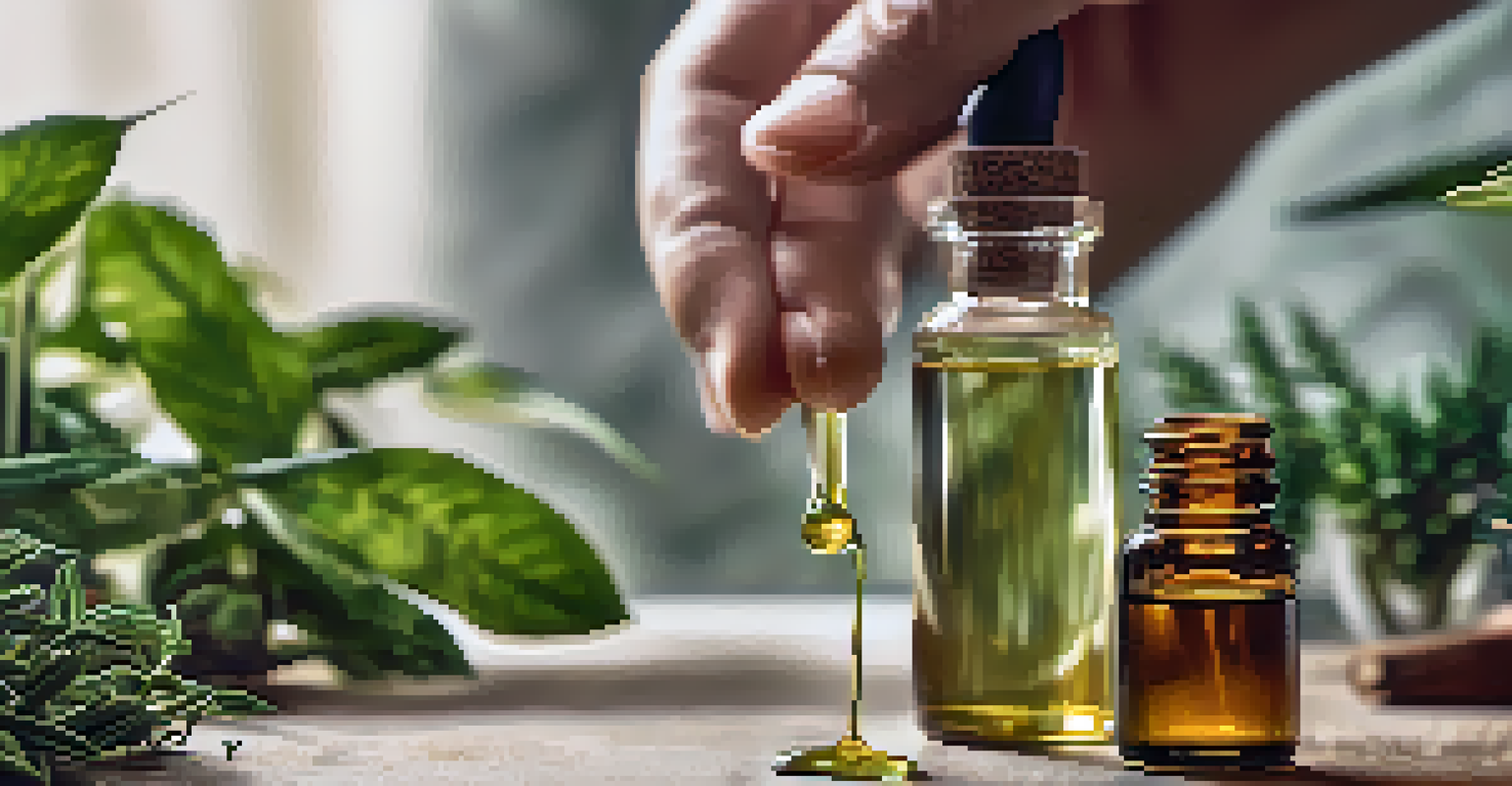Essential Oil Blending: Creating Synergy in Aromatherapy

Understanding Essential Oils and Their Properties
Essential oils are concentrated extracts from plants, capturing their scent and therapeutic properties. Each oil carries unique characteristics, such as soothing lavender or invigorating peppermint, which can influence our emotions and well-being. Knowing these properties is crucial when blending, as it allows you to choose oils that complement each other.
Essential oils are the perfect way to bring nature into your home, creating a sanctuary of peace and well-being.
For instance, combining calming oils like chamomile with uplifting citrus oils can create a balanced blend that promotes relaxation while keeping your spirits high. It's like mixing the perfect cocktail; you want to ensure that each ingredient enhances the others, creating a harmonious experience. This understanding is the foundation for effective aromatherapy.
Moreover, some oils may have contraindications, meaning they could react negatively when combined. Always research or consult with a qualified aromatherapist before diving into blending to ensure you’re creating safe and beneficial combinations.
The Art of Blending: Finding the Right Ratios
Blending essential oils is both an art and a science, requiring careful consideration of ratios. A common starting point is to use a base note, a middle note, and a top note in your blends. For example, sandalwood as a base note can anchor the blend, while ylang-ylang as a middle note adds depth, and bergamot as a top note delivers a refreshing lift.

A good rule of thumb is to use 30% base notes, 50% middle notes, and 20% top notes in your mixture. This balance helps ensure that the aroma evolves beautifully over time, providing a more complex scent experience. Think of it as composing a piece of music where each note plays its role to create a symphony.
Essential Oils: Unique Properties
Each essential oil has distinct characteristics that can influence emotions and well-being, making it vital to understand their properties for effective blending.
Experimenting with different ratios can lead to exciting discoveries, so don’t hesitate to play around until you find the perfect mix that resonates with you. Just remember to keep notes on your experiments so you can recreate your favorite blends later!
Creating Synergy: Complementary Oil Pairings
Creating synergy in essential oil blending involves selecting oils that enhance each other’s effects. For example, pairing eucalyptus with tea tree oil can amplify their respiratory benefits, making it an excellent choice for a soothing inhalation blend. This synergy not only enhances the aroma but also boosts therapeutic properties.
The best way to find yourself is to lose yourself in the service of others—with essential oils, you can help yourself and others heal.
Consider using complementary scent profiles as well. Combining sweet vanilla with floral jasmine can create a comforting yet uplifting aroma that appeals to many. When oils work together, they often produce results that are greater than their individual parts—similar to how teamwork can lead to success in any project.
As you experiment with different pairings, take note of how each oil interacts with the others. This process can lead to delightful surprises and unique combinations that reflect your personal preferences.
Dilution: Safety First in Essential Oil Blending
When blending essential oils, dilution is crucial for safety and efficacy. Essential oils are potent and can cause skin irritation if used undiluted. A common practice is to dilute them in a carrier oil—like coconut or jojoba oil—before applying them to the skin, generally using a 2-5% concentration.
For example, if you’re blending for a massage oil, mix about 12 drops of essential oil per ounce of carrier oil. This ensures that you can enjoy the therapeutic benefits without risking irritation. Think of it as adding just the right amount of seasoning to your food; too much can spoil the dish.
Safe Blending Requires Dilution
Diluting essential oils in a carrier oil is crucial for safety and effectiveness, preventing potential skin irritation from undiluted oils.
Additionally, consider the age and health status of the individuals using the blends. Children, pregnant women, or those with specific health conditions may require specific dilutions or certain oils to be avoided altogether. Always prioritize safety to ensure a positive aromatherapy experience.
Common Mistakes in Essential Oil Blending
Even seasoned blenders can make mistakes in the art of essential oil blending. One common pitfall is using too many oils in a single blend, which can result in an overwhelming or muddled scent. Ideally, start with two to three oils and gradually add more if you feel it enhances the blend.
Another frequent error is neglecting the importance of base, middle, and top notes. A blend that lacks balance may not provide the desired aroma or therapeutic effect. Remember to think of your blend as a layered cake—each layer contributes to the overall flavor but must be balanced to create a satisfying result.
Lastly, not keeping a record of your blends can lead to frustration. Documenting your ratios, oils used, and even the sensations or effects can help you replicate successful blends and avoid repeating mistakes. It's all about learning and growing in your blending journey.
Storage and Preservation of Essential Oil Blends
Proper storage of your essential oil blends is essential for maintaining their potency and aroma. Essential oils should be kept in dark glass bottles away from light and heat, which can degrade their quality over time. Think of essential oils as fine wine; they need the right conditions to age well.
Labeling your blends with the date and ingredients is also a smart practice. This helps you keep track of freshness and ensures you know what’s in each bottle. Just like you wouldn’t want to drink expired milk, using old blends may not provide the best experience or results.
Trends in Essential Oil Blending
New trends, such as incorporating CBD oils and focusing on sustainable sourcing, are shaping the future of essential oil blending and consumer choices.
Lastly, be mindful of the shelf life of the individual oils you’re using. Some oils have longer shelf lives than others, and knowing these can help you use them effectively before they lose their potency. Taking care of your oils is an investment in your well-being.
Exploring New Trends in Essential Oil Blending
The world of essential oil blending is dynamic, with new trends emerging regularly. One recent trend is the incorporation of CBD oils, which many believe enhance relaxation and stress relief when blended with traditional essential oils. This combination opens up exciting possibilities for those seeking holistic wellness.
Additionally, the rise of sustainable and ethically sourced oils is shaping consumer choices. More people are becoming aware of the impact of their purchases, leading to a demand for blends that align with their values. Think of it as choosing to shop at a local farmer’s market rather than a big-box store; it feels better to support sustainable practices.

Staying informed about these trends can enrich your blending experience and align your practices with current wellness movements. So, keep an eye on the horizon for new ingredients and philosophies that can inspire your next blend.